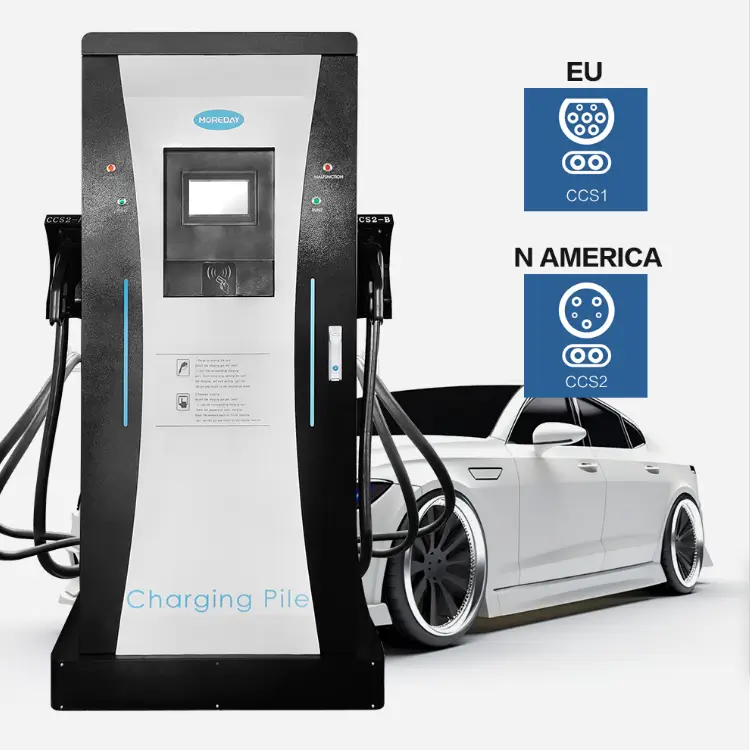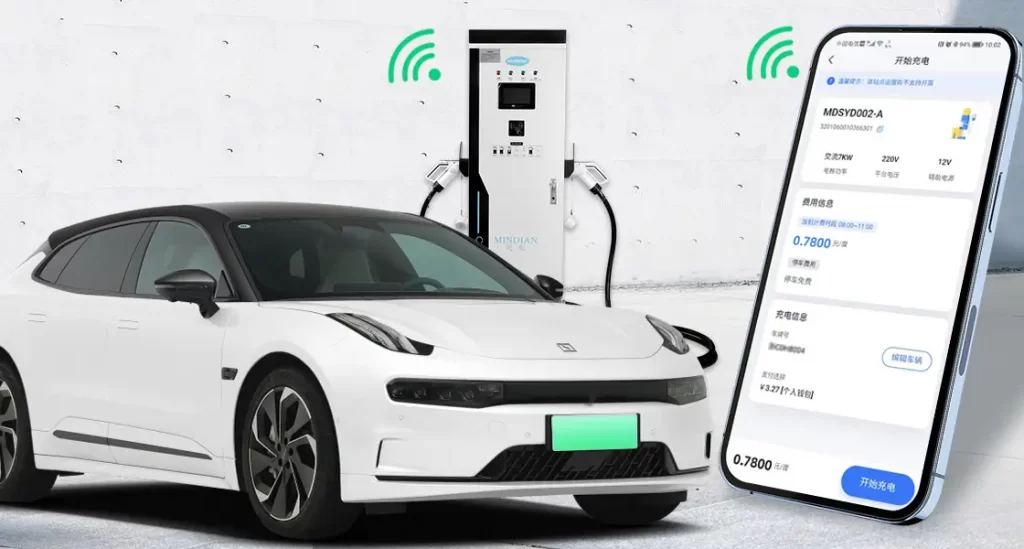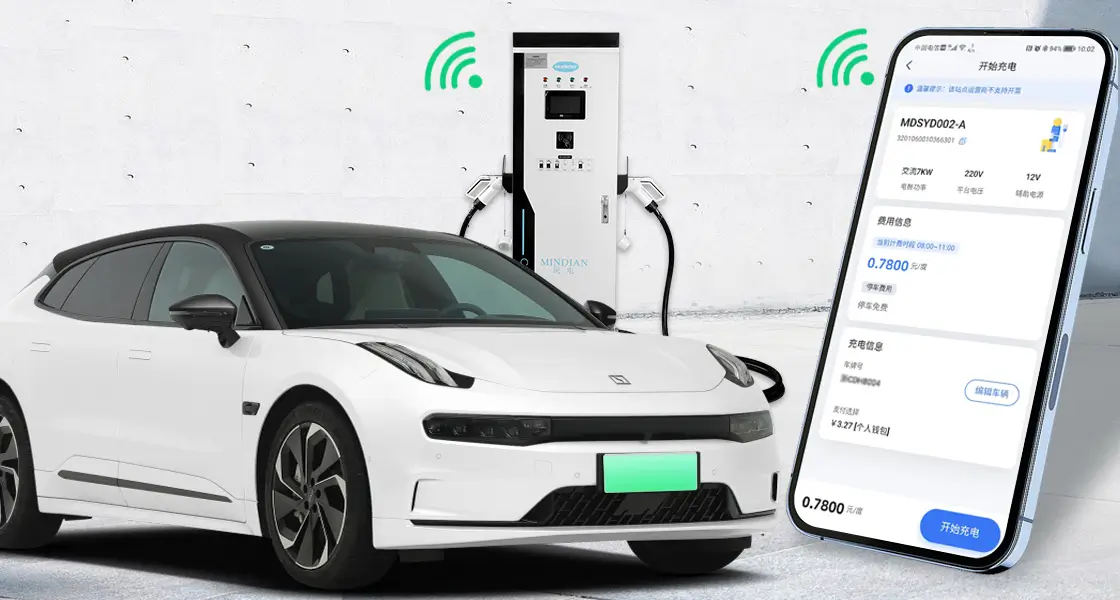Fast charging can generate more heat and stress on the battery than slower charging methods, but modern EVs are equipped with advanced battery management systems (BMS) that help mitigate these risks.
While fast charging is not inherently harmful to EV batteries, understanding its effects and following best practices can help keep your battery healthy over the long term.
What is an electric vehicle battery?
Electric vehicle batteries are rechargeable batteries that power electric vehicles, usually using lithium-ion technology. They have the advantages of high energy density, long life, and environmental protection, which support electric vehicles to travel for a long time. Electric vehicle batteries are charged through chargers and can be recycled, promoting green travel.
Regarding battery charging, many car owners have questions, such as “Should I charge my EV to 100%:”, and understanding the best charging strategy can help extend battery life and improve efficiency.
1. Battery type
The battery used in most electric vehicles is a lithium-ion battery. This type of battery is widely used because of its high energy density and long service life. The working principle of lithium-ion batteries is to move lithium ions between positive and negative electrodes through electrochemical reactions, thereby realizing the process of charging and discharging.
When the battery is charged, lithium ions move from the positive electrode to the negative electrode, and vice versa when discharging. Multiple factors in this process affect battery life, including temperature, charging rate, depth of discharge, etc.
2. Measurement of battery life
Battery life is usually measured in “charge cycles”. Each completed charging process from 0% to 100% is considered a charging cycle. After a certain number of charging cycles, the capacity of lithium-ion batteries will gradually decay.
This is because the chemical materials inside the battery will gradually age as the number of uses increases, eventually resulting in a decrease in the battery’s ability to store electricity. Under normal use, lithium-ion batteries can generally withstand thousands of charging cycles, but the frequency and method of fast charging may accelerate this process.
What is fast charging?

Fast charging, or DC fast charging (direct current fast charging), is a charging method that can provide a large amount of power to electric vehicles in a short time. Compared with traditional slow charging (AC Level 2, etc.), fast charging is significantly faster, and can usually charge the vehicle to about 80% of its power within 30 minutes.
The mainstream fast charging standards on the market currently include Tesla’s Supercharger, CCS (Combined Charging System), etc. These systems can provide charging power of up to hundreds of kilowatts.
Difference between fast charging and slow charging
Slow charging uses AC power, while fast charging uses DC power, which allows fast charging to bypass the rectifier inside the electric vehicle and directly provide high-power current to the battery. Fast charging usually takes a fraction of the time of slow charging.
For example, a regular slow charger may take 4-8 hours to fully charge an electric vehicle, while a fast charger can charge it to 80% in just 20-30 minutes. This increased efficiency makes fast charging ideal for long-distance travel, but the high power load it brings also raises concerns about battery life.
The potential impact of fast charging on batteries
1. Thermal management and temperature effects
Electric vehicle batteries generate heat during charging, especially when using high-power fast charging, the battery temperature will rise faster. High temperatures will harm the life of lithium-ion batteries and accelerate the degradation process of battery materials.
If the battery is exposed to high temperatures for a long time, its capacity will decrease faster, affecting the overall life of the battery. Therefore, the thermal management system of the battery is crucial, and the temperature during charging must be controlled through technologies such as active cooling to ensure that the battery operates within a safe temperature range.
2. Acceleration of chemical changes
Fast charging may accelerate chemical reactions inside the battery, especially the impact on electrode materials. When the fast charging rate is too high, the speed at which lithium ions move increases, which may cause increased stress in the electrode materials inside the battery and ultimately cause damage to the material structure.
In addition, too fast charging may cause lithium deposition (lithium plating), that is, lithium ions fail to return completely to the negative electrode, but instead form a metallic lithium deposition layer on the electrode surface. Lithium plating hinders the normal electrochemical reaction of the battery and causes battery capacity loss.
3. The impact of charging cycles
Frequent use of fast charging may reduce the total number of charging cycles of the battery. Lithium-ion batteries lose power faster under fast charging conditions, which means that using fast charging may cause the battery to enter a decay period faster.
However, slow charging has a smaller current and causes less loss to the battery during the charging process, so it can relatively extend the battery life. Therefore, frequent use of fast charging may shorten the battery life, while slow charging puts less burden on the battery.
How to mitigate the negative impact of fast charging on batteries

1. The role of the battery management system (BMS)
Modern electric vehicles are usually equipped with advanced battery management systems (BMS), which can monitor battery temperature, voltage, charging rate, and other parameters in real-time.
By optimizing these parameters, the BMS can adjust the charging power during fast charging, avoid overcharging and overheating, and protect the battery from excessive loss.
2. Best practices when charging
To extend the life of the battery, car owners should try to avoid charging under extreme temperature conditions when using fast charging.
In addition, the battery should not be fully charged or completely exhausted for a long time. The best range of power is to keep it between 20%-80%, which can effectively reduce the pressure on the battery and extend its service life.
3. A combination of slow charging and fast charging
In daily life, car owners can choose to use slow charging and fast charging in combination. For daily commuting or short-distance driving, slow charging is a gentler charging method that can reduce battery loss.
In long-distance travel or emergencies, the high efficiency of fast charging can play its advantages. Reasonable arrangement of charging methods can ensure convenience while extending the battery life.
Advantages of fast charging and scene applications
1. Advantages of time efficiency
The biggest advantage of fast charging is its time efficiency. Compared with slow charging, fast charging can replenish a large amount of power for the vehicle in a short time, especially in long-distance travel or when the vehicle is urgently needed. This high efficiency provides great convenience for car owners.
In addition, with the continuous expansion of the network of fast charging stations, the availability and convenience of charging facilities are also rapidly improving, allowing more car owners to enjoy the convenience brought by fast charging.
2. Necessity in specific scenarios
Fast charging is irreplaceable in some scenarios. For example, frequently used vehicles such as shared cars, online car-hailing or logistics fleets often need to be charged quickly to be put into the next round of operation.
In these commercial applications, the efficiency of fast charging is much higher than that of slow charging, which can greatly improve the turnover rate of vehicles and reduce the waste of operating time.
Conclusion
The emergence of fast charging technology has undoubtedly brought great convenience to electric vehicle users, especially in scenarios of long-distance travel and high-frequency use. However, while bringing convenience, the potential impact of fast charging on battery life is also an issue we should pay attention to.
By rationally using a combination of fast and slow charging, relying on the battery management system to optimize the charging process, and adopting the best charging practices, car owners can enjoy the convenience of fast charging while minimizing the loss of battery life.
The EV charging solutions on the MOREDAY website provide a variety of efficient electric vehicle charging equipment, covering home and commercial charging stations. They support fast charging, and intelligent charging management, and are compatible with different models of electric vehicles, ensuring that car owners have a convenient and safe charging experience. MOREDAY’s EV charging products focus on green environmental protection, helping users easily recharge electric vehicles and promote the popularization of clean energy.
Related reading: Should I Charge My EV Every Night?


